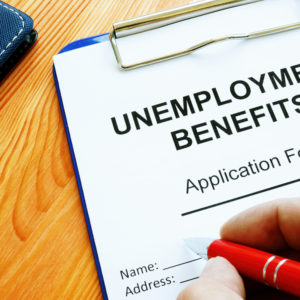Widespread government-mandated closures of businesses over the last six weeks has led to intense, and often hostile, debate over which forms of employment are “essential” and which are “non-essential.”
With jobless claims since mid-March surging past 26 million last week, the intensity of debate is unlikely to wane anytime soon.
While certain industries are clearly more “essential” than others in terms of sustaining life and keeping the country running at a minimal level, it is important to recognize that productive activities, including jobs currently deemed “non-essential,” are in reality vital to the overall well-being of individuals and to society as a whole.
The detrimental economic effects of high rates of unemployment and disconnection from the labor force — including lost earnings and employment potential, lower rates of upward mobility, slower economic growth, fewer tax revenues, and increased dependency and government spending on entitlement programs — are fairly well-known.
Less frequently discussed, however, are the psychological, physical and social consequences of prolonged periods of unemployment and disconnection.
Research shows that engaging in productive work both within and outside of the economic sphere — particularly work that serves or benefits others — provides a sense of purpose and contributes to long-term happiness and physical and mental well-being.
On the other hand, unemployment and lack of productive work are strongly correlated to decreased happiness, increased substance abuse, and mental and physical health issues.
The deterioration of physical and mental well-being correlated with unemployment may be due in part to the financial stress and feeling of failure that frequently accompany joblessness, but it may also be a consequence of the prolonged idleness and social alienation associated with disconnection from the workforce. This idleness and social alienation are particularly acute for men.
In his illuminating book “Men Without Work,” political economist Nicholas Eberstadt observes that whereas women who leave the workforce, either voluntarily or not, are likely to engage in other meaningful and productive activities such as caring for children or family members, only a small percentage of jobless men are engaged in these valuable pursuits.
Rather, Eberstadt points out that a large percentage of unemployed men self-report spending most of their day pursuing immediate sources of gratification, such as attending gambling establishments, using tobacco or illegal drugs, and watching movies or television.
Government handouts that elevate consumption, while disincentivizing production, only further exacerbate these negative trends.
High levels of unemployment and disconnection from work not only harm jobless individuals, they also impose significant costs on society as a whole. Chronic unemployment delays the achievement of key milestones, such as home ownership, and is associated with lower marriage and higher divorce rates.
When parents lose their jobs, their children are less likely to do well in school and achieve remunerative employment themselves. Joblessness also has a stronger effect on violent crime than poverty itself in highly impoverished areas.
Lawmakers will no doubt be tempted to use skyrocketing unemployment rates as an excuse to pass unrelated party priorities under the guise of “jobs bills.” They should instead pursue policies narrowly tailored to improve immediate opportunities and incentives for Americans to engage in productive activity.
An important first step would be to restructure social safety net programs, so that they no longer discourage people from taking available jobs.
A second good place to start would be to remove regulatory barriers that inhibit people from working even outside of a pandemic.
Occupational licensing restrictions are one example. Although most everyone would agree that some licensing requirements are necessary to prevent gross negligence and harm, many state licenses, such as those restricting florists or hair braiders, are put in place not to protect the public but to restrict competition.
Some states have already begun to lead the way in reform by recognizing out-of-state licenses and by loosening market entry requirements for professions that do not pose serious health or safety risks.
Another beneficial action, particularly in light of the unique challenges posed by COVID-19, would be to reframe labor regulations to allow employers to offer a range of work relationships — such as flexible schedules, telecommuting and reduced hours — to employees with different priorities and life situations.
Stay-at-home orders have revealed that many jobs can be done from home. While working from home isn’t for everyone, it allows those who want more time with their children or who have health conditions to continue to work.
The job losses resulting from government ordered shut-downs and stay-at-home orders have already proved to be widespread and severe, but well-tailored policies aimed at restoring production and incentivizing hiring will go a long way to mitigate the negative economic, psychological, physical and social consequences of such losses and to restore the essential dignity of work.

